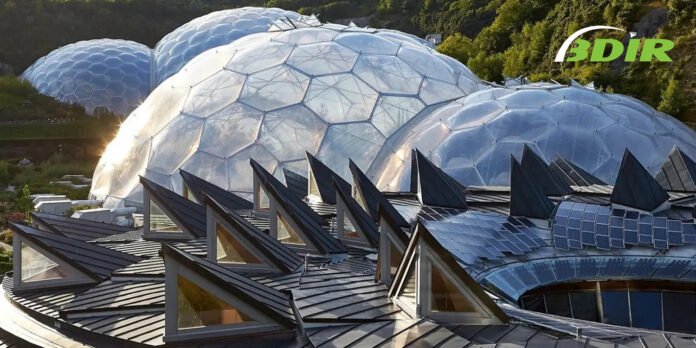Fabric structures provide considerable benefits over concrete block structures in a multitude of sectors, from architecture and aircraft to industrial extraction and polar research. These fabric buildings are favored over traditional systems because of their lower costs, greater performance, and mobility, in terms of providing long-term cover and room for activities or stockpiling.
When compared to traditional constructions, the following characteristics of tension fabric structures can be appreciated by industrial and commercial processes:
- Pocketability;
- Flexibility;
- Highest Usable Area;
- Building Time Reduction;
- Environmental Benefits;
- Long-Lasting;
The Layout Of Portable Buildings
A patented structural membrane is stretched over an elevated galvanized metal or ultralight alloy frame structure in fabric structures. Based on the use, the fabric structure might have had a solid base or the structure may be stabilized using alternative techniques if the project’s timeframe makes a complete concrete structural base superfluous. Such designed fabric buildings are extremely portable and simple to transfer due to their components and a premade design.
Fabric constructions are significantly easier to transport than concrete block structures. And they are simple to dismantle and carry from one location to another. They also have very few core restrictions. These infrastructures, which include prefabricated or cast-in-place cement, and others, maybe swiftly and simply be built on nearly any level ground. Fabric structures can even be built on an existing solid base and then removed for relocation later on.
Build Fabric Structures For Adaptability
Fabric structures are very adaptable and suited for practically any purpose due to the large range of materials and size options available. These are often designed for decades of usage in any region, including harsh settings and atmospheric conditions such as extreme winds and large snow loads. But they are also excellent constructions for a wide range of typical and distinctive commercial and industrial purposes.
Constructions with a free span increase internal floor space.
Because designed fabric buildings are open range, there seem to be no interior posts, arches, columns, or frames. The inside high ceilings and open design increase usable area. Fabric roof structures have ample leeway for storing oddly-shaped gear or machines.
If the structure is utilized for storage, the strained material on the open range constructions means additional storage area. A fabric roof structure has the largest square footage for practical usage since it lacks interior supports or posts.
To hold the larger roofing shingles, many concrete block structures require strong reinforcement supports within. To protect the ceiling from collapse, pillars or arches, as well as extra beam supports, may be required.
These fabric structures are worth it
These fabric structures have significant benefits in terms of endurance and sturdiness. They usually are independently tested and certified for correct design and construction. The are also field-proven. Therefore, they cansurvive harsh weather and environment.
Furthermore, these fabric structures are built to meet or surpass local and regional construction requirements for increased dependability as long-lasting shelters and/or operating facilities.
Fabric structures have a distinct advantage over traditional cinderblock constructions in terms of durability, reliability, fuel savings, adaptability, and mobility.







